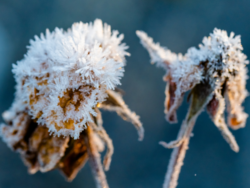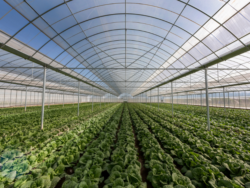The cold is an abiotic factor that can significantly impact the growth, development, and yield of crops. Low temperatures can cause direct damage to plants and affect the quality of harvested products. With climate change and the increasing occurrence of extreme temperatures, this issue has become a growing concern for farmers, producers, and agricultural researchers.
In this article, we will explore the effects of the cold on crops, the types of damage plants can suffer, and the most effective adaptation strategies to minimize losses.

Damage Caused by the Cold in Crops
The effects of the cold on crops can manifest in various ways, depending on the intensity and duration of low temperatures. There are two main types of damage:
1. Frost Damage
Frost occurs when air temperatures drop below 0°C (32°F), causing ice crystals to form within plant cells. This process can lead to:
- Rupture of cell membranes.
- Cell dehydration.
- Cell death, affecting leaves, stems, and flowers.
Frost can be especially devastating during critical stages such as flowering and fruit setting, reducing both productivity and crop quality.

2. Cold Stress Damage
Cold stress damage occurs at temperatures above 0°C but still low enough to affect plant metabolism. Its effects include:
- Reduced photosynthesis.
- Delayed growth.
- Poor accumulation of sugars and essential metabolites.
- Visible symptoms such as leaf yellowing and lower fruit production.
This type of damage can affect sensitive crops even in regions where frost is not common.
Crops Most Vulnerable to the Cold
Some crop species are more susceptible to low temperatures than others. In general, plants from warm climates tend to suffer more severe damage.
- Highly vulnerable: Corn, sorghum, tropical fruit trees, etc.
- More tolerant: Wheat, barley, and other crops from temperate zones.
Young and developing plants are particularly sensitive since their tissues are not yet fully developed to withstand adverse conditions. Additionally, factors such as water stress or nutrient deficiencies can increase cold vulnerability, weakening plants and making them more susceptible to damage.
Adaptation Strategies to Mitigate Cold Effects
Farmers have developed various strategies to reduce the impact of low temperatures on crops. Some of the most effective include:
1. Selection of Cold-Resistant Varieties
This approach involves identifying crop varieties capable of withstanding frost, extreme temperatures, or sudden climate changes without suffering significant damage. Cold-resistant crops are essential for ensuring food security in regions with harsh winters, reducing economic losses, and enabling greater productivity year-round.
2. Preventive Agronomic Management
Proper agricultural practices can minimize the effects of the cold:
- Use of crop covers and mulching: Helps maintain soil temperature and protects young plants.
- Planting at optimal times: Avoiding periods of frost or extreme cold.
- Crop rotation: Improves soil structure and plant resilience.
3. Protection with Greenhouses and Plastic Tunnels
The use of greenhouses and plastic covers can provide a controlled environment that protects crops from low temperatures. These structures are particularly effective in producing vegetables and flowers.

4. Proper Irrigation and Fertilization Management
Adequate irrigation and fertilization management can strengthen crops, making them more resistant to cold. A proper supply of water and nutrients helps plants develop stronger tissues capable of withstanding adverse conditions.
The use of biostimulants is recommended as they act as buffers against low-temperature damage. Organic products prevent damage to plant membranes, allowing crops to continue developing without growth limitations.
5. Climate Monitoring and Prevention
The use of technological tools such as weather stations and mobile applications allows farmers to anticipate cold events and take preventive measures.

The impact of the cold on crops is a constant challenge for agriculture, especially in the context of climate change and extreme temperatures. However, implementing proper mitigation strategies can make the difference between a successful harvest and significant losses.
For more information on optimizing your crops and achieving a successful harvest, visit our website: https://www.mycsainc.com/en/


